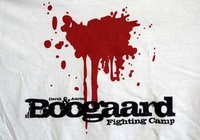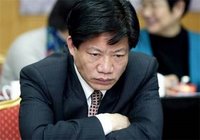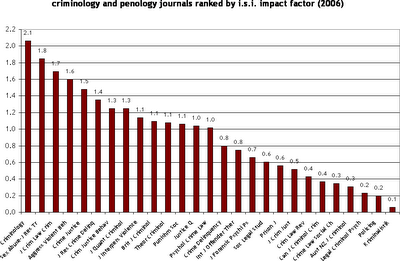listening to sirius 63 on a roadtrip, i learned that loretta lynn is re-releasing this classic prison song. the original was a fine duet with conway twitty, but the new version features a strong marty stuart performance. she’s singing here with teddy wilburn, who is neither conway twitty nor marty stuart. the sentiment is pretty hoky, but i love how this love song humanizes the prison experience — there, but for the grace of god…
Archive: Jul 2007
 the local press are abuzz over derek boogaard’s saskatchwan summer “fight camp.” mr. boogaard is the designated enforcer of the minnesota wild, our professional hockey team.
the local press are abuzz over derek boogaard’s saskatchwan summer “fight camp.” mr. boogaard is the designated enforcer of the minnesota wild, our professional hockey team.
fighting is clearly the camp’s focus and mr. boogaard’s most marketable professional asset. as the blood-spattered t-shirts make clear, this is not your typical skills camp with a little demo discussing fighting as a necessary evil. this is a fight camp.
i’m most interested in the parents of the 12-18 year-olds in attendance. real hockey moms and dads truck their kids to rinks and camps year round, but savvy parents are probably sending their budding rocket richards and dominik haseks to stickhandling camp or goalie camp. so, who sends their kids to fight camp? a few hypotheses:
1. parents who give in to their kids might reluctantly sign off on fight camp. i can certainly envision some young lads making the camp a real priority and working and/or whining hard to attend. this seems the most likely scenario to me.
2. parents who can only afford fifty bucks might send their kids to fight camp. they get a chance to interact with a famous and/or infamous hockey player but needn’t break the bank to do so.
3. parents who think their boys should be doing a bit more masculinity might send their kids to fight camp. if the little nipper has a nice hockey skill set but shrinks from the violence, the parents might see mr. boogaard’s camp as an efficient karate-kidlike corrective.
4. parents who think their boys should discipline their violence might send their kids to fight camp. if the young palooka has shown a propensity for wanton violence, a fight camp might be seen as just the thing to discipline or attenuate it before the authorities step into the picture.
i could spin off a few hypotheses on family structure (frustrated hockey dad or single mom?) and social class (emasculated middle-class or working-class focal concern?), but i’d need to know more about hockey and fighting to do so effectively.
a few more questions: do you think attendees are likely to get into more fights next season relative to last season? would participating in a one-day $50 fight camp have any effect on behavior on or off the ice? do teammates view attendance positively or negatively? i imagine that my lad would ridicule any teammates who thought they needed summer school remediation in this area. i know that he’d ridicule any parents who thought that such a camp could toughen up their kids.
 Job Title: Planning Analyst, Senior
Job Title: Planning Analyst, Senior
Closing Date: 7/19/07 5:00 PM
Salary: $41,976 – $63,900 annually
Job Type: Full-time
Location: Downtown Minneapolis
Department: Strategic Initiatives & Community Engagement
the ny times offered a strong op-ed on juvenile Justice this week. in my juvenile delinquency class, i discuss the 1974 juvenile Justice and delinquency prevention act, which should have removed juveniles from adult jails. unfortunately, the practice of housing kids in adult facilities has continued unabated, with predictable and disturbing results.
org theory reports this week on the new isi web of knowledge journal impact ratings for sociology, so i thought i’d check out the updated criminology and penology rankings. as the figure indicates, criminology once again ranks at the top of the list, with an impact factor of 2.1. this means that, on average, criminology articles published in the past two years were cited a little more than two times in 2006, relative to about 1.3 citations per quant crim article and one citation per Justice quarterly article.
the ratings shift around from year to year, since a “hit” hundred-citation article in, say, policing would rocket that journal up the charts. this year, i’m a bit surprised by the high ranking of sexual abuse: a journal of research and treatment, but see few other surprises on the list. in my opinion, good articles appear in every one of these journals, though the top-ranked journals might be more consistent in publishing high-quality articles from stem to stern in every volume.
how should you consider such measures in assessing journal quality? i’d advise a multi-method approach. the best and most thoughtful discussion i’ve seen on ranking journal quality comes from the auburn university library. i’ll paraphrase liberally:
1. Citation Analysis
A high number of citations generally indicates a high level of quality. Cited reference searching enables you to find articles from journals that have cited a book, a patent or another article. Through a cited reference search, you can discover how a known idea or innovation has been confirmed, applied, improved, extended or corrected… Citation Analysis Debate
2. Impact Factor
Impact factor is based on the number of times that articles in a journal are cited in the two years following the year of publication…High impact factor or highly cited journals are considered more prestigious and important. JCR Fact Sheet Impact Factor Debate
3. Prestige and Reputation of the Journal
The prestige and reputation of the association, society, or organization publishing a journal can be a determining factor. Theoretically, the most prestigious scholarly associations such as APA, IEEE, etc. publish the best, most important, research in the field and therefore their journals have more prestige and weight than others…
4. In-Depth Knowledge of the field and Journals in the field
…Few people have knowledge of, and familiarity with all scholarly journals in a discipline …However, among sub-disciplines, it becomes more possible to possess in-depth familiarity with the journals. If someone does truly possess this knowledge, their opinion, of which are the “best” journals in a discipline is worth a great deal in assessment.
5. Acceptance/Rejection Rate of the Journal
…Low acceptance rate, high rejection rate journals are considered the best and most prestigious journals. …Many journals and societies have web pages that give publication data and style requirements and often includes acceptance/rejection rates. The paper copy of the journal occasionally includes this data and will always provide current contact information. Periodical Guide
6. Indexing Services covering the Journal
Whether a journal is indexed in the major indexing/abstracting service in the field is another criteria that can be used to assess the worth and quality of a journal.
7. Total Circulation of the Journal
…High readership and circulation could be markers of a journal’s quality and/or popularity. Circulation numbers can be often be found in Ulrich’s International Periodicals Directory or might be obtained from the journal publisher’s website.
 zheng xiaoyu has been executed. the former head of china’s food and drug safety agency had been convicted of accepting bribes from pharmaceutical companies this may.
zheng xiaoyu has been executed. the former head of china’s food and drug safety agency had been convicted of accepting bribes from pharmaceutical companies this may.
leftist criminologists often rail against the light sentences given to white-collar criminals in the united states, particularly when measured against the lengthy prison time served by those convicted of street crimes. this sort of disproportionality case is most convincing with respect to drug convictions and property crimes. it doesn’t take a marxist to notice that poor people who steal $2,000 worth of property sometimes do longer (and harder) time than executives who steal $2,000,000 emptying a pension fund.
i suppose that a few criminologists will read zheng xiaoyu’s execution as evidence that an appropriate consideration of social harm has been given its due weight at sentencing. more cynically, of course, most of us will interpret this execution as signaling that scapegoats will be found and crucified whenever big-time market interests are threatened — in china, as elsewhere.
either way, i doubt that this execution will do much to purge the diethylene glycol from your counterfeit colgate or the melamine from your cat food.
 nate chapnick of edmunds.com offers a nice piece on surveillance systems and in-car cameras that allow parents to monitor their teen drivers. one firm will track your car’s sudden movements, record the data on a website, and assign your kid a “risk score.”
nate chapnick of edmunds.com offers a nice piece on surveillance systems and in-car cameras that allow parents to monitor their teen drivers. one firm will track your car’s sudden movements, record the data on a website, and assign your kid a “risk score.”
i once scoffed at such surveillance measures. then i thought about the two teenagers in my house hurtling down the road in three-thousand pounds of steel.
the data tell us that when teenagers die, they are likely to die behind the wheel. the centers for disease control report that “motor vehicle crashes are the leading cause of death for U.S. teens, accounting for 36% of all deaths in this age group” and that “the risk of motor vehicle crashes is higher among 16- to 19-year-olds than among any other age group …. per mile driven, teen drivers ages 16 to 19 are four times more likely than older drivers to crash.”
though i understand these risks, i’m too much of a small-l libertarian to monitor my kids electronically. i’ve decided to adopt a probable cause standard for implementing such surveillance. that means that i won’t hassle with such stuff unless and until i have information sufficient to warrant a prudent person’s belief that tor or esperanza had been delinquent or that evidence of delinquency or contraband would be found in a search.
but that doesn’t mean that i won’t take steps short of full-on surveillance, such as implementing curfews, based on a less-stringent reasonable suspicion standard. if i judge that a reasonable parent in my circumstances could reasonably believe that tor or esperanza has been, is, or is about to be, engaged in delinquent activity, i will strike down upon them with great rulemaking and furious anger. plus, i’ll take the keys.
come to think of it, my kids don’t really need to drive at all. if they broach the probable cause standard and behave so irresponsibly that i feel the need to purchase an in-car surveillance system, i’ll just hold the keys until they can afford to buy it for me. that’ll teach ’em.
 australia has a reputation for producing particularly nasty anti-speeding public service announcements. newsweek’s kendall hill reports on a new campaign with a lighter touch:
australia has a reputation for producing particularly nasty anti-speeding public service announcements. newsweek’s kendall hill reports on a new campaign with a lighter touch:
When you first read the slogan, SPEEDING: NO ONE THINKS BIG OF YOU, you might think it was a reminder that people think poorly of those who break the law. Think again. This new road-safety campaign, launched in Australia last week, is aimed a bit more below the belt—by suggesting those men who speed have small penises. In the television and cinema advertisements, young “hoons”—Aussie-speak for speeding or reckless drivers—are mocked by unimpressed women who wave their little fingers at the drivers in a parody of their manhood.
nice. my reading of the literature leaves me a bit skeptical that any PSAs could alter long-term behavior, especially among hoons. yes, crack cocaine use dropped when kids learned that it wasn’t cool, but they didn’t need a television ad to convey the message. still, i’m intrigued by comparisons between appeals to our nobler impulses and appeals to rationality or superficiality. the latter seem to hit us where we really live, especially when supported by good science. messages showing how smoking gives you wrinkles or shrinks your manhood might thus be more effective than messages about, say, the deleterious effects of secondary smoke on your loved ones.
watching both ads, i can’t help but think about an experiment comparing changes in driving behavior among dudes exposed to pinkie-wagging and dudes exposed to bloody bodies in the ditch. two questions: (1) which approach, if any, would be more effective in the short- and longer-terms? and, (2) is there a functional equivalent to pinkie-wagging that would deter all those female speeders racing past me?
 via the sentencing project and talkleft:
via the sentencing project and talkleft:
in the democratic forum broadcast on pbs last thursday, the 1,756 democratic candidates for president addressed the issue of crime and punishment. watching the video and reading the transcript, one gets the sense that the bloom is officially off the mandatory minimum rose.
aside from eliminating the disparity in crack/powder cocaine sentencing, however, the candidates were a bit light on concrete reforms. breaking news: not one candidate called for greater racial disparity in Justice or expansion of the death penalty for expired license plate tabs.
hmmm. what happened to the clinton/gore kill ’em all crime rhetoric of the nineties? is it getting just a little bit safer for democrats to be just a little bit softer on crime? i’ll be fascinated to hear the republican response.
in not-unrelated news, the times endorsed the second chance act today, to “provide grants, guidance and assistance to states and localities that are developing programs to reintegrate former inmates into their communities.”
 the local press are abuzz over derek boogaard’s saskatchwan summer “fight camp.” mr. boogaard is the designated enforcer of the minnesota wild, our professional hockey team.
the local press are abuzz over derek boogaard’s saskatchwan summer “fight camp.” mr. boogaard is the designated enforcer of the minnesota wild, our professional hockey team.
fighting is clearly the camp’s focus and mr. boogaard’s most marketable professional asset. as the blood-spattered t-shirts make clear, this is not your typical skills camp with a little demo discussing fighting as a necessary evil. this is a fight camp.
i’m most interested in the parents of the 12-18 year-olds in attendance. real hockey moms and dads truck their kids to rinks and camps year round, but savvy parents are probably sending their budding rocket richards and dominik haseks to stickhandling camp or goalie camp. so, who sends their kids to fight camp? a few hypotheses:
1. parents who give in to their kids might reluctantly sign off on fight camp. i can certainly envision some young lads making the camp a real priority and working and/or whining hard to attend. this seems the most likely scenario to me.
2. parents who can only afford fifty bucks might send their kids to fight camp. they get a chance to interact with a famous and/or infamous hockey player but needn’t break the bank to do so.
3. parents who think their boys should be doing a bit more masculinity might send their kids to fight camp. if the little nipper has a nice hockey skill set but shrinks from the violence, the parents might see mr. boogaard’s camp as an efficient karate-kidlike corrective.
4. parents who think their boys should discipline their violence might send their kids to fight camp. if the young palooka has shown a propensity for wanton violence, a fight camp might be seen as just the thing to discipline or attenuate it before the authorities step into the picture.
i could spin off a few hypotheses on family structure (frustrated hockey dad or single mom?) and social class (emasculated middle-class or working-class focal concern?), but i’d need to know more about hockey and fighting to do so effectively.
a few more questions: do you think attendees are likely to get into more fights next season relative to last season? would participating in a one-day $50 fight camp have any effect on behavior on or off the ice? do teammates view attendance positively or negatively? i imagine that my lad would ridicule any teammates who thought they needed summer school remediation in this area. i know that he’d ridicule any parents who thought that such a camp could toughen up their kids.
 Job Title: Planning Analyst, Senior
Job Title: Planning Analyst, Senior
Closing Date: 7/19/07 5:00 PM
Salary: $41,976 – $63,900 annually
Job Type: Full-time
Location: Downtown Minneapolis
Department: Strategic Initiatives & Community Engagement
the ny times offered a strong op-ed on juvenile Justice this week. in my juvenile delinquency class, i discuss the 1974 juvenile Justice and delinquency prevention act, which should have removed juveniles from adult jails. unfortunately, the practice of housing kids in adult facilities has continued unabated, with predictable and disturbing results.
the ratings shift around from year to year, since a “hit” hundred-citation article in, say, policing would rocket that journal up the charts. this year, i’m a bit surprised by the high ranking of sexual abuse: a journal of research and treatment, but see few other surprises on the list. in my opinion, good articles appear in every one of these journals, though the top-ranked journals might be more consistent in publishing high-quality articles from stem to stern in every volume.
1. Citation Analysis
A high number of citations generally indicates a high level of quality. Cited reference searching enables you to find articles from journals that have cited a book, a patent or another article. Through a cited reference search, you can discover how a known idea or innovation has been confirmed, applied, improved, extended or corrected… Citation Analysis Debate
2. Impact Factor
Impact factor is based on the number of times that articles in a journal are cited in the two years following the year of publication…High impact factor or highly cited journals are considered more prestigious and important. JCR Fact Sheet Impact Factor Debate
3. Prestige and Reputation of the Journal
The prestige and reputation of the association, society, or organization publishing a journal can be a determining factor. Theoretically, the most prestigious scholarly associations such as APA, IEEE, etc. publish the best, most important, research in the field and therefore their journals have more prestige and weight than others…
…Few people have knowledge of, and familiarity with all scholarly journals in a discipline …However, among sub-disciplines, it becomes more possible to possess in-depth familiarity with the journals. If someone does truly possess this knowledge, their opinion, of which are the “best” journals in a discipline is worth a great deal in assessment.
5. Acceptance/Rejection Rate of the Journal
…Low acceptance rate, high rejection rate journals are considered the best and most prestigious journals. …Many journals and societies have web pages that give publication data and style requirements and often includes acceptance/rejection rates. The paper copy of the journal occasionally includes this data and will always provide current contact information. Periodical Guide
6. Indexing Services covering the Journal
Whether a journal is indexed in the major indexing/abstracting service in the field is another criteria that can be used to assess the worth and quality of a journal.
7. Total Circulation of the Journal
 zheng xiaoyu has been executed. the former head of china’s food and drug safety agency had been convicted of accepting bribes from pharmaceutical companies this may.
zheng xiaoyu has been executed. the former head of china’s food and drug safety agency had been convicted of accepting bribes from pharmaceutical companies this may.
leftist criminologists often rail against the light sentences given to white-collar criminals in the united states, particularly when measured against the lengthy prison time served by those convicted of street crimes. this sort of disproportionality case is most convincing with respect to drug convictions and property crimes. it doesn’t take a marxist to notice that poor people who steal $2,000 worth of property sometimes do longer (and harder) time than executives who steal $2,000,000 emptying a pension fund.
i suppose that a few criminologists will read zheng xiaoyu’s execution as evidence that an appropriate consideration of social harm has been given its due weight at sentencing. more cynically, of course, most of us will interpret this execution as signaling that scapegoats will be found and crucified whenever big-time market interests are threatened — in china, as elsewhere.
either way, i doubt that this execution will do much to purge the diethylene glycol from your counterfeit colgate or the melamine from your cat food.
 nate chapnick of edmunds.com offers a nice piece on surveillance systems and in-car cameras that allow parents to monitor their teen drivers. one firm will track your car’s sudden movements, record the data on a website, and assign your kid a “risk score.”
nate chapnick of edmunds.com offers a nice piece on surveillance systems and in-car cameras that allow parents to monitor their teen drivers. one firm will track your car’s sudden movements, record the data on a website, and assign your kid a “risk score.”
i once scoffed at such surveillance measures. then i thought about the two teenagers in my house hurtling down the road in three-thousand pounds of steel.
the data tell us that when teenagers die, they are likely to die behind the wheel. the centers for disease control report that “motor vehicle crashes are the leading cause of death for U.S. teens, accounting for 36% of all deaths in this age group” and that “the risk of motor vehicle crashes is higher among 16- to 19-year-olds than among any other age group …. per mile driven, teen drivers ages 16 to 19 are four times more likely than older drivers to crash.”
though i understand these risks, i’m too much of a small-l libertarian to monitor my kids electronically. i’ve decided to adopt a probable cause standard for implementing such surveillance. that means that i won’t hassle with such stuff unless and until i have information sufficient to warrant a prudent person’s belief that tor or esperanza had been delinquent or that evidence of delinquency or contraband would be found in a search.
but that doesn’t mean that i won’t take steps short of full-on surveillance, such as implementing curfews, based on a less-stringent reasonable suspicion standard. if i judge that a reasonable parent in my circumstances could reasonably believe that tor or esperanza has been, is, or is about to be, engaged in delinquent activity, i will strike down upon them with great rulemaking and furious anger. plus, i’ll take the keys.
come to think of it, my kids don’t really need to drive at all. if they broach the probable cause standard and behave so irresponsibly that i feel the need to purchase an in-car surveillance system, i’ll just hold the keys until they can afford to buy it for me. that’ll teach ’em.
 australia has a reputation for producing particularly nasty anti-speeding public service announcements. newsweek’s kendall hill reports on a new campaign with a lighter touch:
australia has a reputation for producing particularly nasty anti-speeding public service announcements. newsweek’s kendall hill reports on a new campaign with a lighter touch:
 via the sentencing project and talkleft:
via the sentencing project and talkleft:
aside from eliminating the disparity in crack/powder cocaine sentencing, however, the candidates were a bit light on concrete reforms. breaking news: not one candidate called for greater racial disparity in Justice or expansion of the death penalty for expired license plate tabs.
hmmm. what happened to the clinton/gore kill ’em all crime rhetoric of the nineties? is it getting just a little bit safer for democrats to be just a little bit softer on crime? i’ll be fascinated to hear the republican response.
in not-unrelated news, the times endorsed the second chance act today, to “provide grants, guidance and assistance to states and localities that are developing programs to reintegrate former inmates into their communities.”

